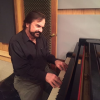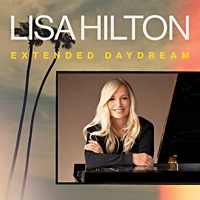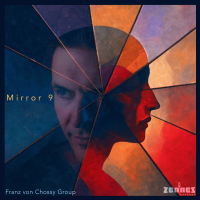Home » Jazz Musicians » Jerry Lee Lewis
Jerry Lee Lewis
Though he had only three Top 10 hits in the first, purely rock & roll phase of his career, many critics believe Jerry Lee Lewis was as talented a '50s rocker as Sun labelmate Elvis Presley. Some also believe that Jerry lee Lewis could have made it just as big commercially if his piano-slamming musical style was not so relentlessly wild, his persona not so threateningly hard-edged. Lewis' first musical influences were eclectic. His parents, who were poor, spun swing and Al Jolson records. But his earliest big influence was country star Jimmie Rodgers. In his early teens he absorbed both the softer country style of Gene Autry and the more rocking music of local black clubs, along with the gospel hymns of the local Assembly of God church. Lewis first played his aunt’s piano at age eight and made his public debut in 1949 at age 14, sitting in with a local C&W band in a Ford dealership parking lot. When he was 15 Lewis went to a fundamentalist Bible school in Waxahachie, Texas, from which he was soon expelled. He has often said that rock & roll is the Devil’s music. In 1956 Lewis headed for Memphis (financed by his father) to audition for Sam Phillips’ Sun Records. Phillips’ assistant, Jack Clement, was impressed with Lewis’ piano style but suggested he play more rock & roll, in a style similar to Elvis Presley’s. (Presley had recently switched from Sun to RCA.) Lewis’ debut single, “Crazy Arms” (previously a country hit for Ray Price), did well regionally, but it was the followup, 1957’s “Whole Lotta Shakin’ Going On” (#3), that finally broke through. The song first sold 100,000 copies in the South; after Lewis’ appearance on Steve Allen’s TV show, it sold over 6 million copies nationally. “Great Balls of Fire” (#2, 1957) sold more than 5 million copies and was followed by more than a half million in sales for “Breathless” (#7, 1958) and “High School Confidential” (#21, 1958), the title theme song of a movie in which Lewis also appeared. Both “Whole Lotta Shakin’” and “Great Balls” were in the pop, country, and R&B Top 5 simultaneously, “Shakin’” at #3 pop, and #1 R&B and C&W, and “Great Balls” at #2 pop, #3 R&B, and #1 C&W. Lewis’ high school nickname was the “Killer,” and it stuck with him as he established a reputation as a tough, rowdy performer with a flamboyant piano style that used careening glissandos, pounding chords, and bench-toppling acrobatics.
Read moreTags
Jerry Lee Lewis: 1935 - 2022

by C. Michael Bailey
And then there were none. The last patrician of the church of rock & roll is no more. Jerry Lee Lewis died at the age of 87 at his Nesbit home in Desoto County, Mississippi on Friday morning, October 28, 2022. Larger than life, in death, Lewis emerges a deeply divided figure: one justly praised for his unequaled artistic achievement and significance and, one vilified for his legion of human foibles. Lewis was one ...
Continue ReadingA Half-Million Dollars: Biographies of Johnny Cash and Jerry Lee Lewis

by C. Michael Bailey
It was December 4, 1956. The famous black and white, now sepia photograph snapped that winter afternoon shows four young men, silhouetted against acoustic tile, making joyful noise. Three of the four were standing around the one at the piano, the one who would be king. When this photograph was taken, two of the men were 21-and the other two, 24-years old. Two were Baptists and two the chosen, Assembly of God, with both traditions shot deep in their individual ...
Continue ReadingInterview: Jerry Lee Lewis

Source:
JazzWax by Marc Myers
Driving south out of Memphis on I-55 last Wednesday, I popped on Jerry Lee Lewis' new CD, Mean Old Man. Officially released yesterday, the album is a tour de force of little-known country and rock songs featuring Lewis on piano accompanied by a who's who of guests, including Mick Jagger, Merle Haggard, John Fogerty, Mavis Staples, Ringo Starr and others. As I sped along with the music blasting, I couldn't help but marvel at how cool it was to be ...
read more
Chrissie Hynde Added to Performance Lineup for American Music Masters Jerry Lee Lewis Tribute

Source:
Just Roots PR
Chrissie Hynde Added to Performance Lineup for American Music Masters Jerry Lee Lewis Tribute
The Del McCoury Band and Sleepy LaBeef will also join the all-star lineup
Cleveland, OH Tuesday, October 16, 2007- For the first time in its 12-year history, the American Music Masters series, a joint venture of the Rock and Roll Hall of Fame and Museum and Case Western Reserve University, will honor a living legend when it pays tribute Jerry Lee Lewis during a weeklong series ...
read more





















